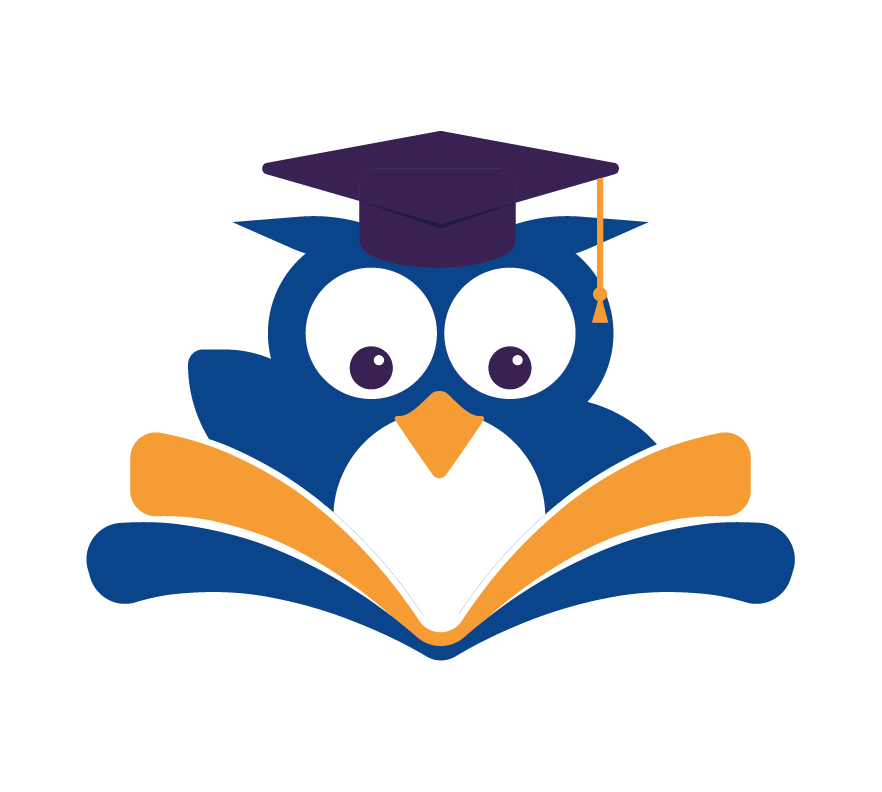Reading is a key skill that can get better with practice and the right methods. We all know that improving reading skills makes reading more fun and meaningful.
Studies show that being active with what you read boosts understanding and memory. We’ll share tips to help you focus better, understand more, and enjoy reading more.
Whether you’re in school or always learning, we aim to make reading fun and useful. By using the right techniques, you can learn more and remember what you read better.
Key Takeaways
- Effective reading strategies can significantly improve comprehension.
- Active engagement with the text enhances retention.
- Improving reading skills takes practice and patience.
- Using the right techniques can make reading more enjoyable.
- Better reading habits can lead to a more effective learning experience.
The Fundamentals of Reading Comprehension
Understanding reading comprehension is key in today’s world. We face a lot of information every day. It’s important to know how to read well.
Why Reading Skills Matter in the Digital Age
In today’s world, we get a lot of information from everywhere. Effective reading skills help you sort out what’s important. With better reading skills, you can understand complex texts and remember what’s important.
The Difference Between Passive and Active Reading
Many people read passively, just going through the text without really getting it. Active reading means you engage with the text before, during, and after reading. This way, you stay focused and remember more.
Signs You’re Reading Passively
- You find yourself re-reading the same paragraphs multiple times.
- You struggle to recall the main points after finishing a chapter.
- You feel disconnected from the material, as if you’re just reading words.
Benefits of Active Engagement
Active reading has many benefits, including:
- Better retention of information
- Improved comprehension of complex texts
- Enhanced ability to analyze and critique the material
Preparing Your Mind and Environment
Starting your reading journey requires setting the stage for success. This means preparing your mind and environment. Good reading isn’t just about the material; it’s also about how you prepare to read it. To improve your reading, focus on creating a great reading space and getting your mind ready.
Creating an Optimal Reading Space
Your reading environment greatly affects your ability to focus and understand. Let’s explore how to make it better.
Lighting and Ergonomics
Good lighting is key for reading comfort. Natural light is best, but a good reading lamp works well when natural light isn’t available. A comfy, ergonomically designed chair and a desk at the right height help prevent fatigue. This lets you focus better on your reading.
To improve your reading, it’s important to reduce distractions. Turn off phone, TV, and other device notifications. Make a quiet, dedicated reading space where you can focus without interruptions. If you live with others, let them know when you’re reading to avoid being disturbed.
Mental Preparation Techniques
Preparing your mind is as important as preparing your space. Here are some tips to get you started.
Setting Intentions
Before you start reading, take a moment to set your intentions. What do you want to achieve from your reading? Are you looking to learn something new, relax, or finish a task? Knowing your goals helps you stay focused.
Clearing Mental Clutter
Mental clutter can block effective reading. Spend a few minutes clearing your mind with meditation, deep breathing, or a quick walk. This helps you get into a focused state, ready to absorb and process what you’re about to read.
By using these strategies, you’ll improve your reading skills and enjoy your reading more. Remember, good reading involves not just reading, but also preparing yourself and your space for success.
How to Read a Book: The Four Reading Levels
Reading well means knowing the four reading levels. These levels help you dive deep into books. They’re not just about reading; they’re about connecting with what you read.
Elementary Reading: Building Foundations
Elementary reading is the start. It’s about getting the basic meaning of a text. It’s key for kids learning to read and for adults to get better at it.
Inspectional Reading: Getting the Big Picture
Inspectional reading is about seeing the main ideas quickly. It’s like getting a quick overview. You can do this by reading the preface and skimming chapters.
Analytical Reading: Deep Understanding
Analytical reading goes deeper. It’s about really understanding the author’s points. You’ll need to think critically and might take notes.
Syntopical Reading: Comparing Multiple Texts
Syntopical reading is the top level. It’s about comparing different texts on the same topic. This helps you see the whole picture better.
Learning these four levels can make you a better reader. Whether you read for fun or school, knowing how to read at different levels changes your experience.
- Elementary reading builds the foundation.
- Inspectional reading gives you the big picture.
- Analytical reading provides deep understanding.
- Syntopical reading allows comparison across texts.
Using these levels makes you a more flexible and effective reader. You can adjust your reading style for any material or purpose.
Pre-Reading Strategies for Better Comprehension
Before you start your next book, let’s look at some pre-reading strategies. These can really help you understand better. Pre-reading gets your mind ready and sets the stage for a good read. The right techniques can make you grasp and remember more.
The 5-Minute Book Preview Method
The 5-minute book preview is a great strategy. It involves quickly looking through the book. Check the table of contents, introduction, and conclusion. This gives you a sense of the book’s structure and main ideas.
Setting Specific Reading Goals
Having specific reading goals can also help. Think about what you want to get from the book. Are you looking for certain info or to understand a concept? Defining your goals helps you stay focused and ensures you get the most important info.
Activating Prior Knowledge
Using what you already know can make understanding easier. Think about what you already know about the topic. Two ways to do this are:
Question Formulation Technique
This method involves making questions about the topic before you read. It makes you more engaged and helps you understand the new info better.
Creating Anticipation Guides
An anticipation guide is a list of statements about the topic. You agree or disagree with them before reading. This gets your brain ready for the new info and makes you more active in reading.
Active Reading Techniques That Enhance Understanding
To get the most out of your reading, it’s key to engage actively. Active reading is more than just reading words. It’s about understanding, analyzing, and keeping the information.
The SQ3R Method
The SQ3R method boosts your reading skills. SQ3R means Survey, Question, Read, Recite, and Review. These steps help you stay focused and remember more.
- Survey: Look at headings and subheadings to get the big picture.
- Question: Turn headings into questions to guide your reading.
- Read: Read the content, looking for answers to your questions.
- Recite: Summarize the main points in your own words.
- Review: Review the material again to solidify your understanding.
Effective Annotation Strategies
Annotation is key in active reading. It helps you connect with the material and remember it better.
Developing Your Personal Annotation System
Creating a personal annotation system boosts your reading. Try different symbols, colors, and abbreviations to find what works for you.
Digital vs. Physical Annotation Tools
Digital and physical annotation tools both have benefits. Digital tools are easy to use, while physical annotation feels more real. Pick what fits your reading style.
Engaging in Dialogue with the Author
Talking to yourself about the author’s ideas can deepen your understanding. Ask questions, question assumptions, and connect the content to your life.
By using these active reading methods, you can improve how well you understand and remember what you read. Make reading a fun and interactive experience!
Note-Taking Systems for Different Reading Purposes
Different reading purposes need their own note-taking strategies. Whether it’s for school, creativity, or personal growth, the right system boosts understanding and memory.
Cornell Method for Academic Reading
The Cornell method is great for schoolwork. It divides your paper into two parts. The narrow side is for keywords and questions, and the wide side is for notes. This method helps you stay engaged and review notes easily.
Mind Mapping for Creative Texts
Mind mapping is perfect for creative texts. It lets you create a map of ideas. This helps you see how ideas connect and boosts creativity. It’s great for those who learn better visually.

Marginalia Techniques for Literary Analysis
Marginalia is for marking up your texts. It’s key for analyzing books. You can track characters and themes by writing in the margins. This deepens your understanding of the author’s message.
Digital Note-Taking Applications and Methods
Today, there are many digital tools for note-taking. Apps like Evernote and OneNote make organizing notes easy. They’re perfect for those who type or need notes on the go.
| Note-Taking Method | Best For | Key Features |
|---|---|---|
| Cornell Method | Academic Reading | Divided page, keyword column, summary section |
| Mind Mapping | Creative Texts, Brainstorming | Visual, interconnected ideas, creative freedom |
| Marginalia | Literary Analysis | Annotations in margins, personal reactions, deep engagement |
| Digital Note-Taking | Flexibility, Organization | Tagging, searching, multi-device access |
Choosing the right note-taking system improves your reading. Try out different methods to see what works best for you.
Reading Different Types of Books Effectively
Reading isn’t a one-size-fits-all activity. Different books need different strategies to get the most out of them. Whether it’s a novel, a textbook, or a self-help book, changing how you read can make it more enjoyable and effective.
Fiction: Immersion and Analysis Techniques
Reading fiction well means getting lost in the story and thinking about its parts. Here are two key ways to do this:
- Character and Plot Tracking: Keep an eye on how characters grow and how the story unfolds. Ask yourself, “What drives this character?” or “How does this event change the story?”
- Thematic Reading: Find and think about the themes in the story. Ask yourself how these themes connect to your life or big issues in society.
Non-Fiction: Information Extraction Methods
Non-fiction books focus on getting the facts and understanding them. Useful methods include:
- Concept Mapping: Make a visual map of the ideas and how they connect. This makes complex information easier to grasp.
- Argument Analysis: Find the main argument and judge its strength. Think about the evidence and if it backs up the conclusions.
Technical and Academic Texts
Technical and academic texts need a detailed and organized method. This might mean reading them multiple times, taking notes, and checking them against other sources to really get the information.
Self-Help and Instructional Books
Self-help and instructional books aim to help you apply what you learn to your life. Good strategies include setting clear goals based on the book’s advice, reflecting on your progress, and making the new habits or insights part of your daily life.
By adjusting your reading style to the book’s type, you can improve your understanding, memory, and overall reading experience.
Speed Reading: Myths and Effective Methods
Exploring speed reading, it’s key to know what’s real and what’s not. Many think it’s about reading fast but losing meaning. But, the truth is, reading smarter, not just faster, is the goal.
Common Speed Reading Misconceptions
One myth is that speed reading means forgetting what you read. But, done right, it can actually help you understand better by focusing on the main points. Another myth is that only geniuses can speed read. But, anyone can learn with practice.
Proven Techniques to Increase Reading Speed
Want to read faster? Two great ways are chunking words and reducing subvocalization.
Chunking Words
Chunking means reading in groups of words, not one by one. This method can really boost your speed.
Reducing Subvocalization
Subvocalization is reading words out loud in your head. Cutting down on this lets you read quicker, as you’re not slowed by your inner voice.
When to Slow Down vs. Speed Up
Knowing when to speed up or slow down is important. For tricky or technical texts, slow down to get it. But, for easy texts or quick info searches, speeding up works well.
Overcoming Common Reading Challenges
It’s key to beat reading challenges to learn well. We often struggle with hard words, staying focused, and feeling tired while reading. Let’s look at ways to tackle these issues and make reading better.
Dealing with Difficult Vocabulary
Hard words can block our reading flow. Here are some tips to handle this:
Context Clues Strategies
Context clues help you guess the meaning of unknown words. Look at the words around it to get a clue. This way, you can keep reading without getting stuck.
Building a Personal Lexicon
Keeping a vocabulary notebook is a smart move. Write down new words and their meanings. This way, you can review and learn them better over time.
| Strategy | Description | Benefit |
|---|---|---|
| Context Clues | Using surrounding text to understand unfamiliar words | Improves comprehension without interruption |
| Personal Lexicon | Creating a notebook for new vocabulary | Enhances vocabulary retention and expansion |
Maintaining Focus and Concentration
It’s hard to stay focused while reading, especially with distractions. Here are some tips to keep your attention:
The Pomodoro Technique for Reading
Read in focused 25-minute chunks, then take a 5-minute break. This method keeps you sharp and focused.
Progressive Muscle Relaxation for Reading Sessions
Relaxing your muscles helps you focus better. Tense and relax different muscle groups to stay calm and focused.

Managing Reading Fatigue
Feeling tired while reading can hurt your understanding. Adjust your reading spot, take breaks, and take care of your eyes.
Using these strategies can help you beat common reading hurdles. Whether it’s hard words, staying focused, or feeling tired, these tips will make you a better reader.
Digital vs. Physical Reading: Optimizing Both Experiences
The debate between digital and physical reading has been ongoing. But what if you could optimize both? Today, readers can choose between e-readers, physical books, or both. Knowing how to use each can improve your reading skills and enjoyment.
E-Reader and Digital Reading Tips
For digital reading, tweaking your screen settings is key. Screen brightness and font size are vital for eye comfort. Most e-readers let you adjust these to fit your space.
Screen Settings for Eye Comfort
Matching your screen brightness to your surroundings can ease eye strain. Many e-readers also have a night mode to cut down on blue light.
Digital Bookmarking and Highlighting
Digital platforms make it easy to bookmark and highlight. Use these tools to organize your thoughts and mark key sections.
Physical Book Reading Strategies
Physical books offer a unique experience. Tactile engagement methods like underlining, note-taking, and using bookmarks can enhance your reading.
Tactile Engagement Methods
Underlining and note-taking keep you engaged. These actions can boost retention and understanding.
Physical Book Organization Systems
Organizing your physical books is simple. Try categorizing by genre or using a personal library catalog.
Hybrid Approaches for Modern Readers
Many readers mix digital and physical reading. Find what fits your lifestyle by trying different formats.
Retention Strategies: Making Knowledge Stick
To really get the most from reading, we must make sure the knowledge we gain stays with us. Retention strategies are key to improving how well we understand and remember what we read.
Spaced Repetition Techniques
Spaced repetition is a great way to keep information in our minds. It means reviewing what we’ve learned at longer and longer intervals. This helps us avoid forgetting what we’ve learned.
Knowledge Application Methods
Using what we’ve learned is also vital. There are many ways to do this, including:
- Teaching What You’ve Learned: Sharing what you know helps you remember it better.
- Writing Summaries and Reviews: Writing down the main points helps you keep important information in mind.
Creating Personal Knowledge Databases
Putting what we’ve learned into a personal database helps us remember it. Here are some ways to do this:
- Book Journaling Methods: Writing about the books you read helps you track your progress and remember key points.
- Digital Knowledge Management Systems: Using digital tools to organize your knowledge makes it easier to review and apply.
By using these strategies, we can improve our understanding and keep the knowledge we gain from reading for a long time.
Conclusion: Building a Lifetime Reading Practice
Starting a reading habit can change your life in many ways. By using the strategies we’ve talked about, you can get more out of your reading. It’s about finding a reading routine that fits your life.
To get better at reading, pay attention to where and how you read. Try out different methods like SQ3R or note-taking to see what suits you. Use techniques like spaced repetition to remember what you read.
The most important thing is to enjoy reading. When you do, you’ll keep reading and growing. So, start today and build a reading habit that will last, using the tips on how to read a book well.

